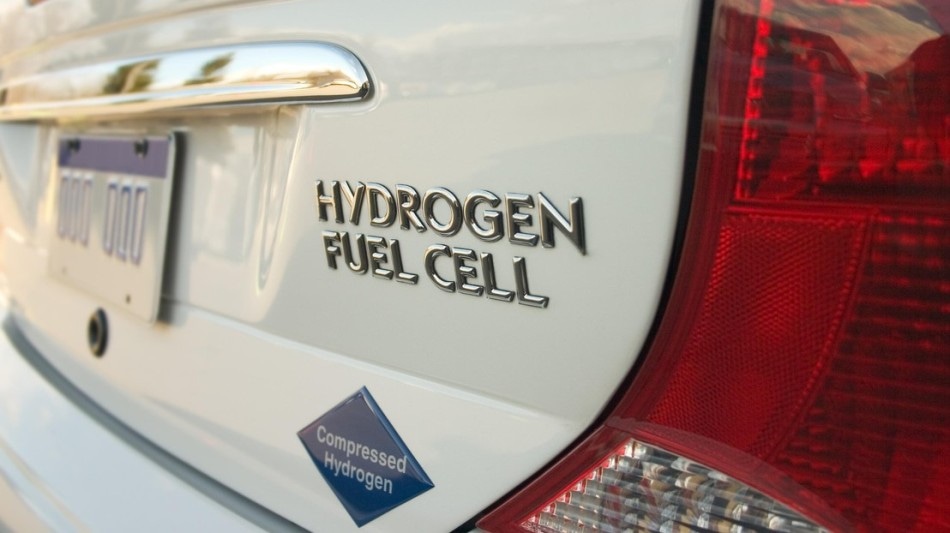Feb 28 2019
EPFL chemists have produced a new iron-nickel oxide catalyst for water splitting. Water splitting is the reaction through which hydrogen fuel is produced.
 Image credit: EPFL
Image credit: EPFL
The patent-pending catalyst exhibits considerably higher activity in the oxygen-evolution part of reaction when compared to traditional nickel-iron oxide catalysts. The research has currently been reported in ACS Central Science.
Renewable sources like sunlight and wind can be used to produce electricity. Electricity can subsequently be used to split water, which produces hydrogen as a fuel for promising energy devices, for example, fuel cells. Since hydrogen is a clean fuel, scientists worldwide are taking lots of efforts in creating water-splitting catalysts, which are vital for the energy efficiency of the reaction.
The main focus is on the so-called oxygen evolution reaction (OER), which is debatably the most difficult process in water splitting. After several years of intense research, nickel-iron oxide is currently recognized as the go-to catalyst for OER in alkaline conditions because of its high activity and earth-abundant composition, and also since it has the highest activity per reaction-site among all metal oxides.
Almost three years ago, researchers associated with the lab of Xile Hu at EPFL found out another catalyst that was considerably more active than nickel-iron oxide, despite its comparable composition. Yet, it was strong, easy to produce, and available for industrial applications.
The finding was headed by Fang Song, a postdoc in Hu’s group who has since joined the faculty at Shanghai Jiaotong University in China. Hu, Song, and their colleague Elitsa Petkucheva acknowledged its technological prospect and filed an international patent application. Furthermore, they received funding from the European Research Council to test the catalyst in a proof-of-principle project. The catalyst was demonstrated to power an efficient electrolyzer that could operate under industrial conditions while using 200 mV less voltage. The team is currently looking for industrial partners to transfer the technology.
However, the new catalyst was also unusual with regards to chemistry.
We didn’t have a clue why the catalyst would be so active.
Xile Hu, EPFL
So, his research team sought the help of the Clemence Corminboeuf group at EPFL. Corminboeuf together with her postdoc Michael Busch, and supported by NCCR MARVEL (Centre on Computational Design and Discovery of Novel Materials), used density functional theory (DFT) computations to look for probable theoretical explanations. DFT is a computational, quantum mechanical approach that models and examines the structure of many-body systems, such as molecules, and atoms.
The outcome was drastic: The high activity of the new catalyst arises from a mutual action of two phase-separated components of iron and nickel oxides, which overcame an earlier identified drawback of traditional metal oxides where the reaction took place locally only on a single metal site. They referred to it as the “bifunctional mechanism.”
Although the DFT-derived mechanism was theoretical, it provided guidance to experimental studies on the activity and properties of the catalyst with Benedikt Lassalle-Kaiser at Synchrotron SOLEIL in France. Using X-ray absorption spectroscopy (XAS), the research revealed evidence of two phase-separated iron and nickel oxides in the catalyst. However, since catalysts can go through compositional and structural variations at the time of catalysis, it turned out to be essential to study the catalyst “in operation” with XAS.
To perform this, the scientists set up a long-standing collaboration program with the team under Professor Hao Ming Chen in National Taiwan University. In a detailed operando XAS study, Chen and his graduate student, Chia-Shuo Hsu, uncovered a distinctive structure of the catalyst: that it is composed of nanoclusters of γ-FeOOH covalently bonded to a γ-NiOOH support—which makes it an iron-nickel oxide catalyst, distinguished from the standard nickel-iron oxide. While it is not a direct evidence, this structure is in accordance with the DFT-proposed bifunctional mechanism.
This is a truly interdisciplinary study involving many fruitful collaborations. The fundamental studies not only provide insights into the structure and activity of this unconventional catalyst but also lead to a thought-provoking mechanistic hypothesis.
Xile Hu, EPFL
This study was funded by EPFL, European Research Council, Zeno Karl Schindler Foundation, Swiss National Science Foundation (NCCR-MARVEL), and Taiwan Ministry of Science and Technology.